
At age five, tour guide Joe Urie found himself staring into the eyes of a magnificent totem pole. It captivated him, as did the towering mountains encircling him in the town of Jasper, Alberta. Urie is Métis, which means he is part of a group of Canadian people that trace their descent to both Indigenous and European ancestors. It’s something he has in common with Jasper’s founder, a postmaster named Jasper Hawes, who opened a trading post there in 1813. Today, Jasper is an unassuming but beautiful resort town nestled in the Canadian Rockies, about four hours’ drive from Alberta’s capital, Edmonton.
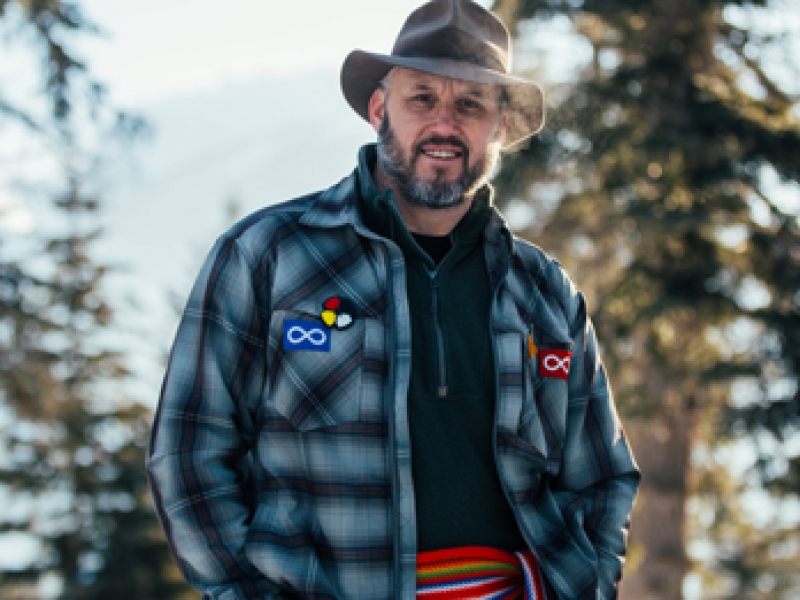
Urie founded Jasper Tour Company along with his wife Patti.
Nestled in the belly of Jasper’s largest valley, surrounded by the Canadian Rockies, five-year-old Urie stood in awe of the scene around him. Surrounding him were icefields and ancient rock faces, pristine rivers flowing into untouched territory and trails that cut through old-growth forests. The majesty of Jasper’s natural beauty was magnetic for Urie. He now calls the town home.
“I don't think I remembered that moment until they were taking that totem pole down and replacing it,” Urie explains, recounting the ceremonial replacement of a historic totem pole in 2009.
The totem, originally from the Haida Gwaii archipelago off Canada’s west coast, was being returned to its place of origin; Jasper would receive a replacement from southwest Alberta. “I called my mom up and said, ‘They are taking this totem pole down, and I have this memory from being on a train; I remember standing outside of the train and looking at this huge totem pole,’” Urie said.
“My mother asked, ‘Do you remember the rest of the story?’ and I didn’t.” Apparently Urie was so mesmerized by the totem pole at the time that he forgot to get back on the train as it prepared to leave the station. Urie’s mother frantically searched for him, eventually asking the conductor to stop the train from departing. Someone finally found him, standing a few feet away, looking up at the totem.
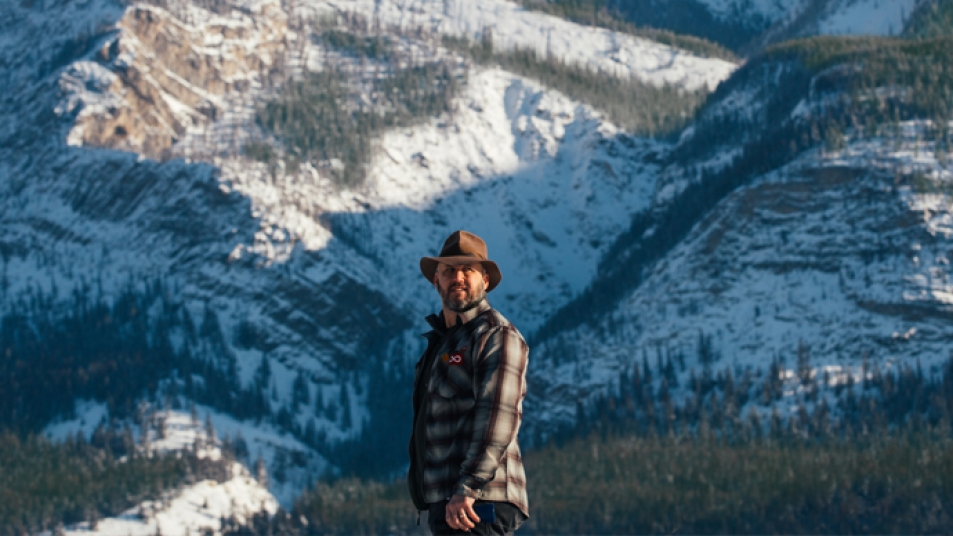
Nearly two decades later Urie found himself back in Jasper, ready to explore Canada's big and beautiful backyard in the Canadian Rockies. Urie’s rural upbringing — he grew up in various northern Canadian communities — gave him a deep-seated love of adventure and exploration. It’s a passion that made Jasper feel like home almost instantly.
“If you asked me [why I moved], I’d say it was on a whim,” he says, recalling the reasons he came back to the Canadian Rockies. “But if you asked me now, I’d have to say ghosts brought me here. It’s kind of hard to explain, but I think something from my own history brought me.” In 2011, Urie started Jasper Tour Company with his now-wife, Patti, leading tours that are informed by his Métis culture and the teachings of Indigenous peoples of Canada’s west coast.

The valley is blanketed by sub-alpine forests, and the limestone peaks that rise out of the cerulean shores of Maligne Lake in the valley’s basin are as powerful as they are jaw-dropping. Spirit Island, a tiny island sitting in the middle of the finger-shaped lake, is one of the most picturesque locales in all the Canadian Rockies, and has been the backdrop of travel photos for decades.

Urie displays a moose antler.
Urie gives tourists a hands-on opportunity to experience the sheer beauty of the Canadian Rockies, leading them through a variety of trails that showcase the park’s most picturesque landscapes. This journey begins with a climb out of the Athabasca Valley, venturing up into the sub-Maligne Valley before arriving at Medicine Lake, a legendary reservoir that fills and empties like a bathtub based on the flow of the Maligne River.
Over the years, Urie has adapted his tours, which range from three to six hours, to suit his guests. He also incorporates elements of his heritage into his storytelling. At Maligne Lake, the second-largest natural lake in the Canadian Rockies, Urie explains how important water is to First Nations Peoples, a subject that remains close to his heart. For Urie, water has remained of recurring importance, acting as the glue that bonds his family both historically and today. “My Grandmother was born on a trapline, about twenty-odd kilometers out of [Fort] Chipewyan,” he explains. Fort Chipewyan was used as an outpost at the end of the Athabasca River at Lake Athabasca, and Urie’s mother was born mid-way along the river. And in 1988, says Urie, “I come to be at the birth of it”, living close to where the river begins, in Jasper National Park.
While he doesn’t know a lot about his family history in his early years, Urie’s tours have provided their own set of lessons. The forests, mountains, and rivers of the Canadian Rockies contain the voices of thousands of years of Indigenous history.
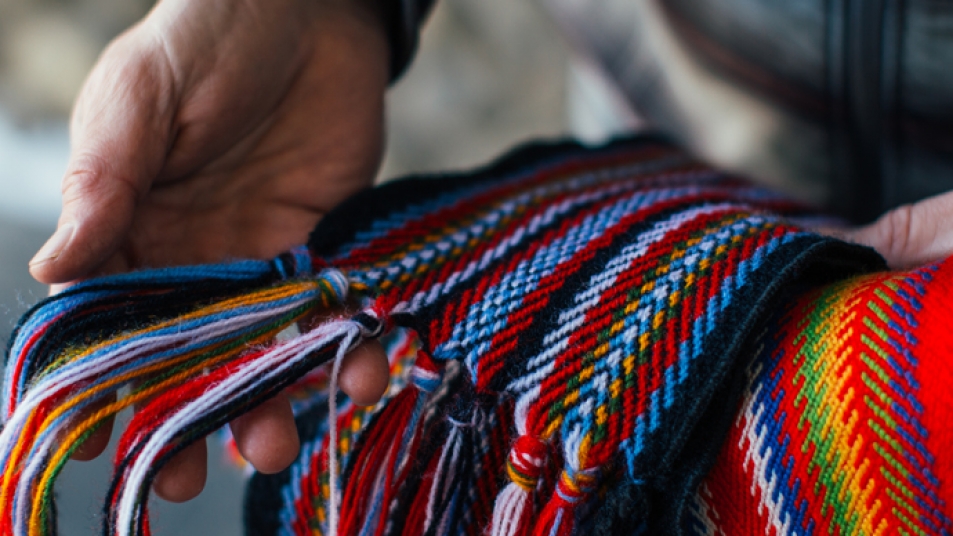
“Everyone is starting to reconnect: cultures, families, and of course, society and the government, and so on,” says Urie. He believes tours like the ones he leads play a huge part in facilitating the connection between tourists and Indigenous peoples in Jasper, helping to create a better understanding of First Nations’ cultures and a stronger bond with nature.
In his view, more conventional learning experiences like museums often display history through found objects and narratives of people who are no longer with us. While those sources are informative, Urie feels they may not always have the same ability to breathe life into the past and engage the individual in a way that the natural environment can. Combining those complementary experiences, however, can ignite wonder.

Urie recently visited the Royal Alberta Museum in Edmonton with his cousin. The visit gave him a unique—and deeply personal—look back in time. “There’s a big display on my own family history! It’s one of the permanent displays,” he recalls fondly. Urie is the great-grandson of Louison “Louis” Fosseneuve, a leader in the development of the Red River and a key figure in the Athabasca Valley fur trade. Fosseneuve was nicknamed “Captain Shot,” and made his name after navigating the rapids that line the mighty Athabasca River with goods-laden river boats.
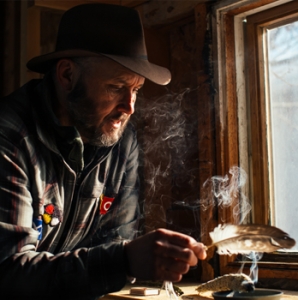
Urie practices smudging at home.
Urie also feels a kinship with the land back in Jasper. At home, he is surrounded by bear, elk, coyote, sheep, wolves, and moose.
He watches elk from his window, eats local deer meat for dinner, and smudges with locally harvested sage, a traditional practice many First Nations groups participate in where sage is burned in order to cleanse the spirit or for other ceremonies. Smudging also purifies and resets spaces and belongings, and has ceremonial uses when combined with other sacred plants such as cedar, sweetgrass, and tobacco.
Urie has made a point to integrate the mindfulness and spirituality of his Métis culture into his tours. “We are a part of nature, but we have become disconnected and decided to separate ourselves. It’s hard to [relate with nature] elsewhere,” he says. “But if you come to a place like Jasper, other than the roads and the town itself, out there it's exactly the same as it was before anyone lived here.” It’s something you can only feel and experience if you immerse yourself in it, taking in the sights and sounds firsthand.

There aren’t many places on the planet that are as pristine and timeless—and accessible—as Jasper. In the absence of the artificial glow of city lights and chaotic noise of a bustling metropolis, visitors here can imagine the Rockies as they were thousands of years ago and watch the skies unfold above them. Jasper is the second-largest dark-sky preserve in the world, which means there is very little light pollution, making it an ideal destination for stargazing. In colder months, you may even see the dancing colors of aurora borealis, also known as northern lights. “There are [other] places that are untouched, but you have to go through hell to get there—you don’t [with] Jasper,” Urie says.
While a road trip through the mountains is certainly an option, traveling by train means you won’t miss the very landscapes you’ve come to admire. Our rail journeys, much like Urie’s tours, provide an opportunity to take in remarkable glacier-fed lakes, rushing rivers, verdant forests, and majestic mountains of the Canadian Rockies. Our train travels between Vancouver and Jasper, along two different routes: A two-day, all-daylight journey aptly called Journey through the Clouds, with an overnight stop in Kamloops, British Columbia (B.C.); and a three-day Rainforest to Gold Rush journey, which travels through northern B.C., stopping in Whistler and Quesnel.
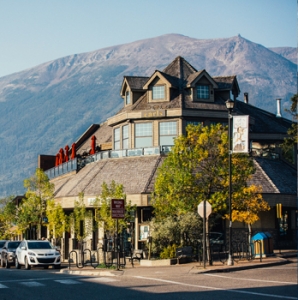
The picturesque town of Jasper, Alberta.
Along the way, history comes to life through the stories told by the train’s onboard Hosts, who, like Urie, share insights about the natural splendor surrounding the rail cars as they pass through Western Canada. You can unwind and watch the stunning Canadian landscape through enormous, glass-domed or oversized windows, dine on sumptuous meals, and begin to absorb the land and its heritage before even arriving in Jasper.
Once you get there, explore the picturesque town from its quaint main street and town center lined with restaurants, bakeries, museums, galleries, and shops, or head to nearby lakes, rivers, glaciers, and mountains to experience the breathtaking beauty of the Canadian Rockies. For Urie, Jasper is the kind of heaven you can send a postcard from. It’s a must-visit Canadian jewel that he is more than happy to help others discover. And if you listen closely, maybe you will also hear the teachings found in the forests, waters, mountains, and totems.


